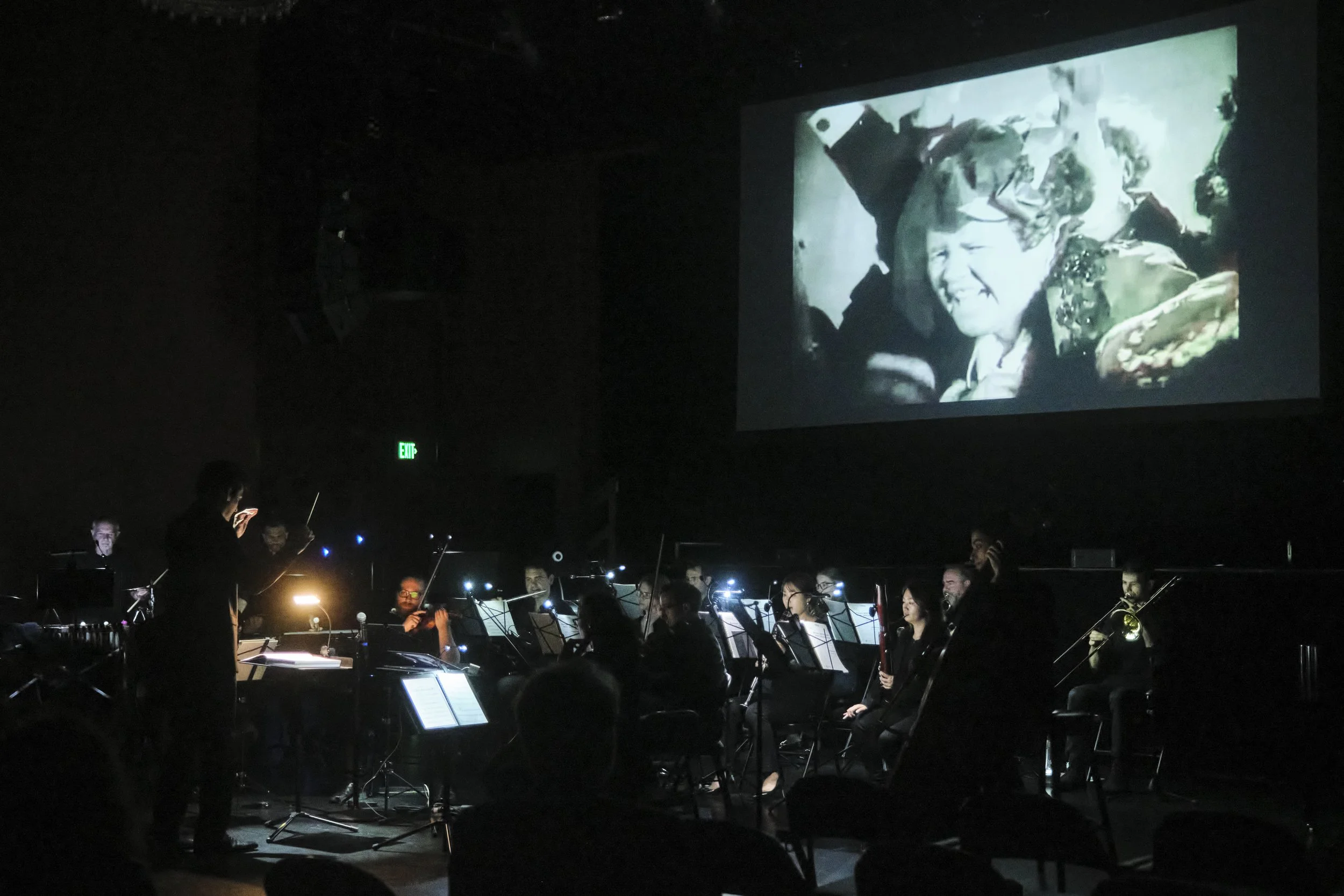a conductor who faces the audience
a conductor who faces the audience
“Conductor Ian Niederhoffer has accomplished two impressive feats by the age of 25. First, he has established Parlando, a chamber orchestra, and secondly, he has found an audience… he is charismatic, enthusiastic and articulate, which together with his undeniable skills as a musician, makes for a winning combination.”
“Niederhoffer makes good on [Parlando’s] motto, ‘Every concert tells a story.’ But smart, unusual programming on this level fosters a gripping narrative of its own, too.”
“The Grosse Fuge came across compellingly. It takes a certain amount of energy and articulation to keep 24 instrumentalists from simply sounding overly heavy and Niederhoffer achieved this, with the lyrical moments played with shape and character.”

Photo: Rebecca Fay
“The story of Soviet music is often told as one of individual repression, but I became entranced by the idea of Soviet music as cultural resilience.”
Parlando’s debut album, Censored Anthems, explores music’s power as a tool of cultural resilience in the face of Soviet censorship.
The album opens with a selection from Dmitri Shostakovich's Lady Macbeth of Mtsensk, whose party-authored scathing review was the first high-profile instance of Soviet musical censorship.

Following is the Concertino for Violin and String Orchestra by Mieczysław Weinberg, whose career was shaped by persecution during Stalin’s anti-cosmopolitan campaign. The American violinist Aubree Oliverson, acclaimed as a “masterful” soloist (San Diego Story), and celebrated for her evocative lyricism and joyful, genuine approach, is the featured soloist.
Armenian Composer Edvard Mirzoyan’s Symphony for String Orchestra closes the album, a testament to the resilience of the Armenian people in spite of Soviet cultural erasure.

Inspired by Parlando’s mission of integrating performance with historical and cultural storytelling, Censored Anthems tells the story of Soviet censorship through speaking directly to audiences. The final three tracks on this album are narrated by conductor Ian Niederhoffer, a spoken program note underscored with the exact music it describes. These three narrated tracks add the weight of history to this wonderful music and paint a more vivid, complete picture of the story of Soviet censorship and cultural resilience.

A series of performance-ready narrated orchestral concerts developed and conducted by Ian Niederhoffer.

Storytelling at the Symphony. Part concert, part narration, part music appreciation, part history, Story Notes is a series of themed concert programs conducted and narrated by Ian Niederhoffer, each with a compelling narrative arc. Story Notes is ready to be adapted and presented by orchestras of all sizes. Target audience demographics are all ticket buyers who yearn to learn more in an unintimidating format, but all adults will enjoy the programming and presentation.
Unlike traditional pre-concert talks or academic introductions, Story Notes’ format integrates storytelling into the orchestral concert experience. Niederhoffer warmly introduces each piece from the podium with anecdotes and historical storytelling, engaging audiences in an accessible concert without watering down the music.
Whether your goal is to attract new audiences, reinvigorate existing subscribers, or elevate community engagement, Story Notes with Ian Niederhoffer offers a way to connect audiences more deeply to your orchestra.


Explore the history of music, cinema, or a custom theme for your community through our series of storytelling concerts.
• Explore Music History Series: Classical Mastery, Romantic Power & Passion, Modern Voices
• Lights, Camera, Action: The Origins of the Hollywood Sound
• Swinging Strings: When Jazz Meets Classical
• Forbidden Symphonies: When Music is Silenced
• Symphony of Laughter: Comedy and Classical Music
• Songs of the Earth: Music, Nature and the Environment
• Love Notes: The Music of the Ones That Got Away
• New England on the Silver Screen
• Cowboy Classical
• Custom program for your orchestra and community